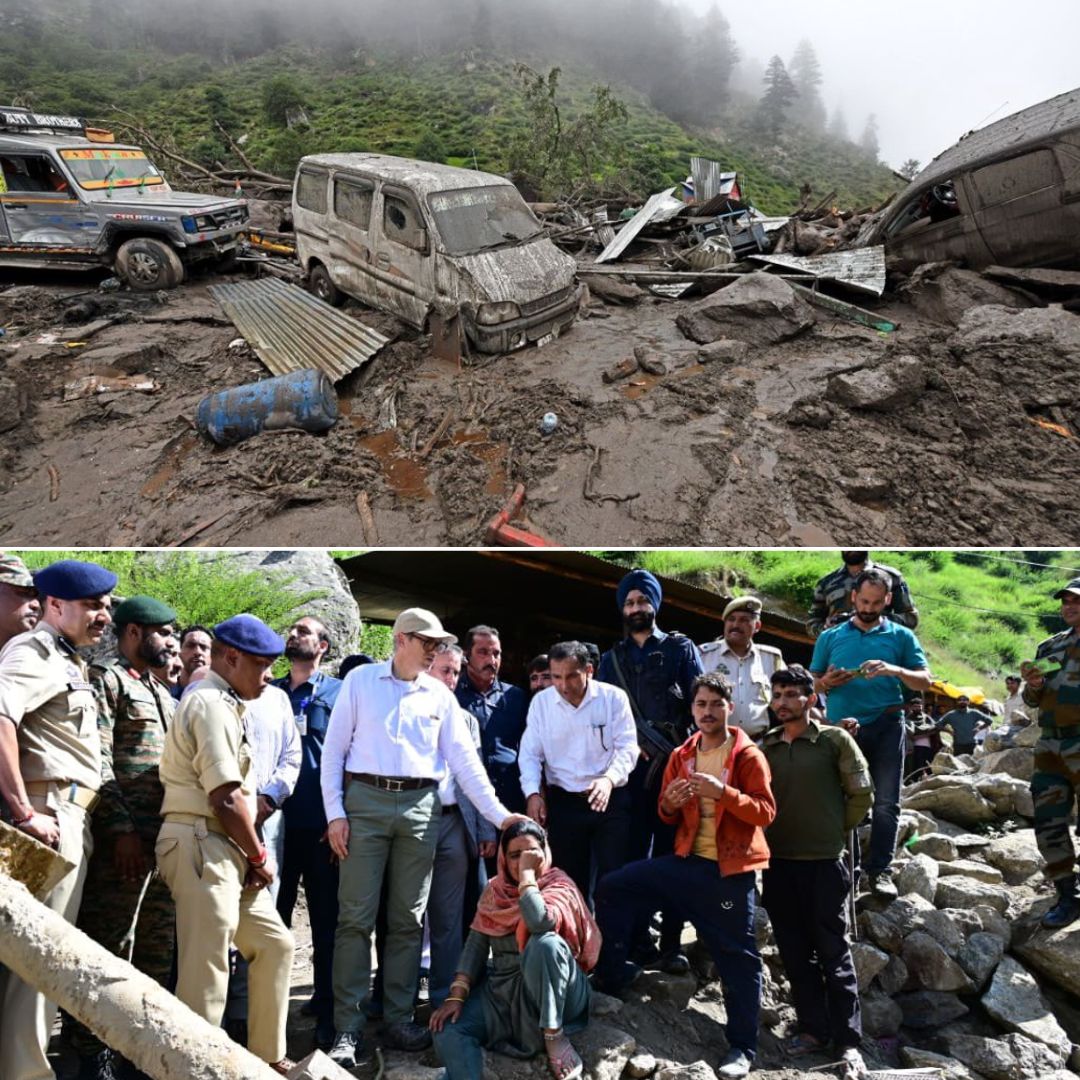A catastrophic flash flood, triggered by a sudden cloudburst, has claimed at least 60 lives and injured over 100 others in the Kishtwar district of Jammu and Kashmir as of 16 August 2025.
The calamity, which struck the Chisoti village area on 14 August, has left at least 75 people reported missing. Army, police, National Disaster Response Force (NDRF), and local volunteers have been working day and night amid hazardous conditions to rescue trapped residents and yatris (pilgrims).
Chief Minister Omar Abdullah, accompanied by top state and central officials, has pledged continuous assistance and ordered a high-level probe into preparedness and response.
Tales of Loss, Survival, and Ongoing Rescue
The flash flood struck with little warning in Chisoti, a remote area crowded with devotees attending the annual Machail Mata Yatra pilgrimage. In mere minutes, muddy torrents engulfed tents, homes, and even government buildings; eyewitnesses recount that the chaos left locals and visitors no time to secure loved ones or belongings.
“We only heard a roaring sound suddenly water was everywhere,” said Shabir Ahmed, a local resident. The dead include two Central Industrial Security Force (CISF) personnel and a local police officer posted for yatra security.
Rescue personnel, sniffer dogs, and heavy earth-movers continue to search for survivors, with Army helicopters ferrying critically injured victims to hospitals in Jammu and Srinagar. Remarkably, teams managed to pull out 167 people from debris and swollen streams, though at least 38 remain in critical condition.
Emotional scenes play out daily as families wait at makeshift relief camps and district hospitals, desperately hoping for news of missing loved ones.
A Recurring Disaster: Vulnerabilities and Wider Impact
Jammu and Kashmir’s hilly districts are no strangers to cloudbursts and flash floods. Experts say the frequency and intensity have spiked in recent years, largely due to warming climates, deforestation along hillsides, and unplanned construction near riverbanks.
Local administration revealed that infrastructure loss was “unprecedented” over 16 residential houses, three ancient temples, and key bridges were demolished, leaving entire villages isolated.
Power, water, and communication links remain down in swathes of the district, further hampering coordination and supply of relief materials. District officials, meanwhile, have prioritised restoring access and airlifting food and medical kits to cut-off hamlets using Indian Air Force Mi-17 helicopters.
“We will leave no stone unturned to trace every missing person,” said Senior Superintendent of Police Anayat Ali Choudhary, urging public patience while promising transparency in official updates. Meteorologists warn that more rainfall is expected in the area, complicating rescue and rehabilitation efforts.
The Logical Indian’s Perspective
Our hearts go out to every family touched by this tragedy. It is in times like these that the spirit of resilience, compassion, and community truly shines, even as nature’s fury tests human limits. The urgent need now is not just rescue and relief, but a complete rethinking of disaster preparedness in the face of a changing climate.
It is critical that authorities strengthen flood warning systems, regulate high-risk pilgrimages during monsoon, and enforce eco-sensitive construction norms to protect both people and the ecosystems they live in.
The Logical Indian calls on all stakeholders citizens, policy-makers, and faith leaders to join hands in building safer, more climate-resilient communities. How can we support both rapid recovery and longer-term resilience for those living in India’s most ecologically vulnerable regions?










